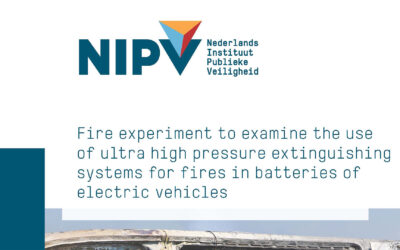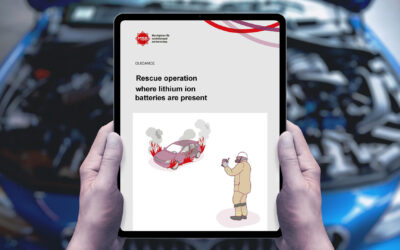This report is a compilation of research projects conducted using the Cold Cut Cobra firefighting system. The report should be seen as a literature review and as guidance to finding more information about new research results regarding Cobra and the Cobra Method. This report highlights research important for Incident Commanders and users to know, which will support a better understanding of why the Cobra works as it does and how to use it in the most effective way. The report is the first made by Cold Cut Systems that collates and presents findings from research projects.
Summary
The Cobra ultra-high pressure water jet firefighting system is a Swedish invention that is used to fight fires both on land and at sea. The main application allows firefighters to fight fire in a modern, efficient and effective way from a safer location. Cobra is used from the outside of a fire compartment and, with the use of a cutting abrasive additive in the water, can pierce through compartment boundaries, efficiently cool hot fire gases and suppressing/extinguishing the fire without the need for firefighters to enter.
The Cobra Method (CEC) is a method that combines the use of thermal image cameras, Cobra and Tactical Ventilation. Many Fire and Rescue Services work with the Cobra Method and initiate an intervention with the incident commander scanning the building from the outside with a thermal image camera in order to determine where the hot spots are, and where the Cobra attack will have the best effect. Cobra is then used to cool hot fire gases, suppressing and/or extinguishing the fire if possible. Tactical Ventilation is then initiated to vent the fire gases and steam. A tactical plan incorporating a combination of these key capabilities can produce much safer working environments for firefighters to enter into.
Experimental measurements show that the spray is characterized by small droplets in the water jet travelling at a high speed [1]. The following characteristic diameters were measured at 10 m distance from the nozzle using 260 bar injection pressure: arithmetic mean diameter d10»60 μm and the Sauter mean diameter d32 » 170 μm. The velocity at this distance from the nozzle was approximately 7 ms-1 in the spray core. These measurements support previous explanations of the efficiency of Cobra and have also lead to a more detailed understanding of the extinguishing process. The study showed markedly differences with other systems on the market and clearly shows the advantages with Cobra.
By the use of data from the spray characterization [1], CFD simulations have been conducted to simulate stirring effects, gas cooling efficiency and inerting for different room scenarios [2]. The simulation result showed that Cobra is outstanding to use for fighting fires in buildings compared to other systems on the market. Cobra is leading in:
- Gas cooling
- Inerting effect
- Efficiency of used firefighting water
Important learnings from this study are that Cobra does reduce the possibility of fire spread and flashover in the compartment and at the same time provides a safe working environment for the firefighters to enter in to. This combination is unique for firefighting systems.


